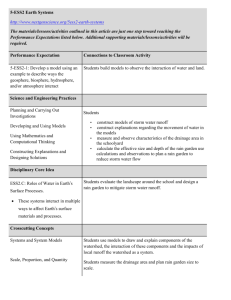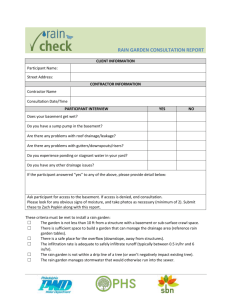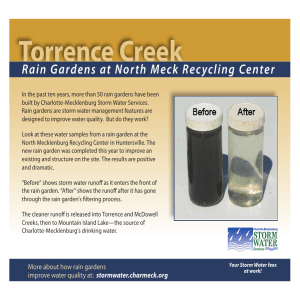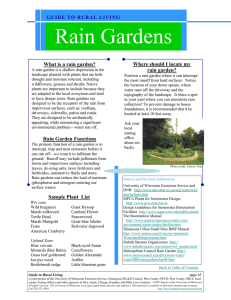Rain Gardens
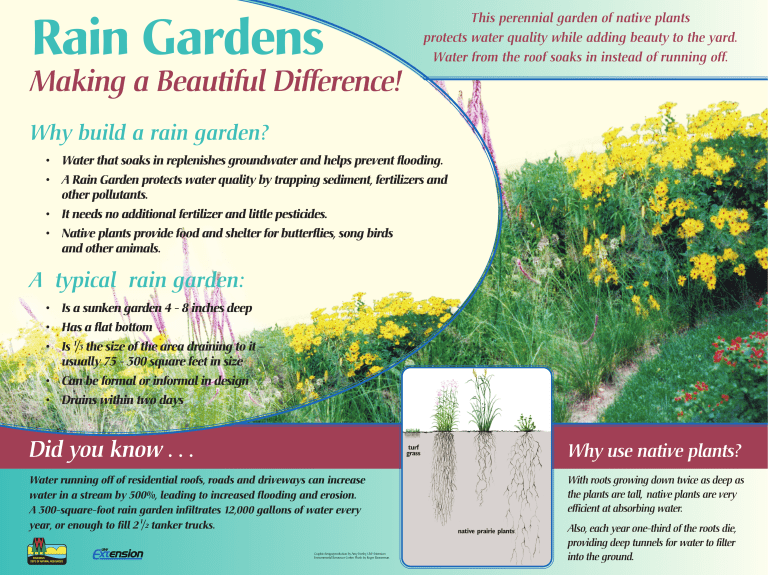
Rain Gardens
Making a Beautiful Difference!
This perennial garden of native plants protects water quality while adding beauty to the yard.
Water from the roof soaks in instead of running off.
Why build a rain garden?
• Water that soaks in replenishes groundwater and helps prevent flooding.
• A Rain Garden protects water quality by trapping sediment, fertilizers and other pollutants.
• It needs no additional fertilizer and little pesticides.
• Native plants provide food and shelter for butterflies, song birds and other animals.
A typical rain garden:
• Is a sunken garden 4 - 8 inches deep
• Has a flat bottom
• Is 1 /
3 the size of the area draining to it – usually 75 - 300 square feet in size
• Can be formal or informal in design
• Drains within two days
Did you know . . .
Water running off of residential roofs, roads and driveways can increase water in a stream by 500%, leading to increased flooding and erosion.
A 300-square-foot rain garden infiltrates 12,000 gallons of water every year, or enough to fill 2
1 /
2 tanker trucks.
Graphic design/production by Amy Hurley, UW-Extension
Environmental Resources Center. Photo by Roger Bannerman.
turf grass native prairie plants
Why use native plants?
With roots growing down twice as deep as the plants are tall, native plants are very efficient at absorbing water.
Also, each year one-third of the roots die, providing deep tunnels for water to filter into the ground.

